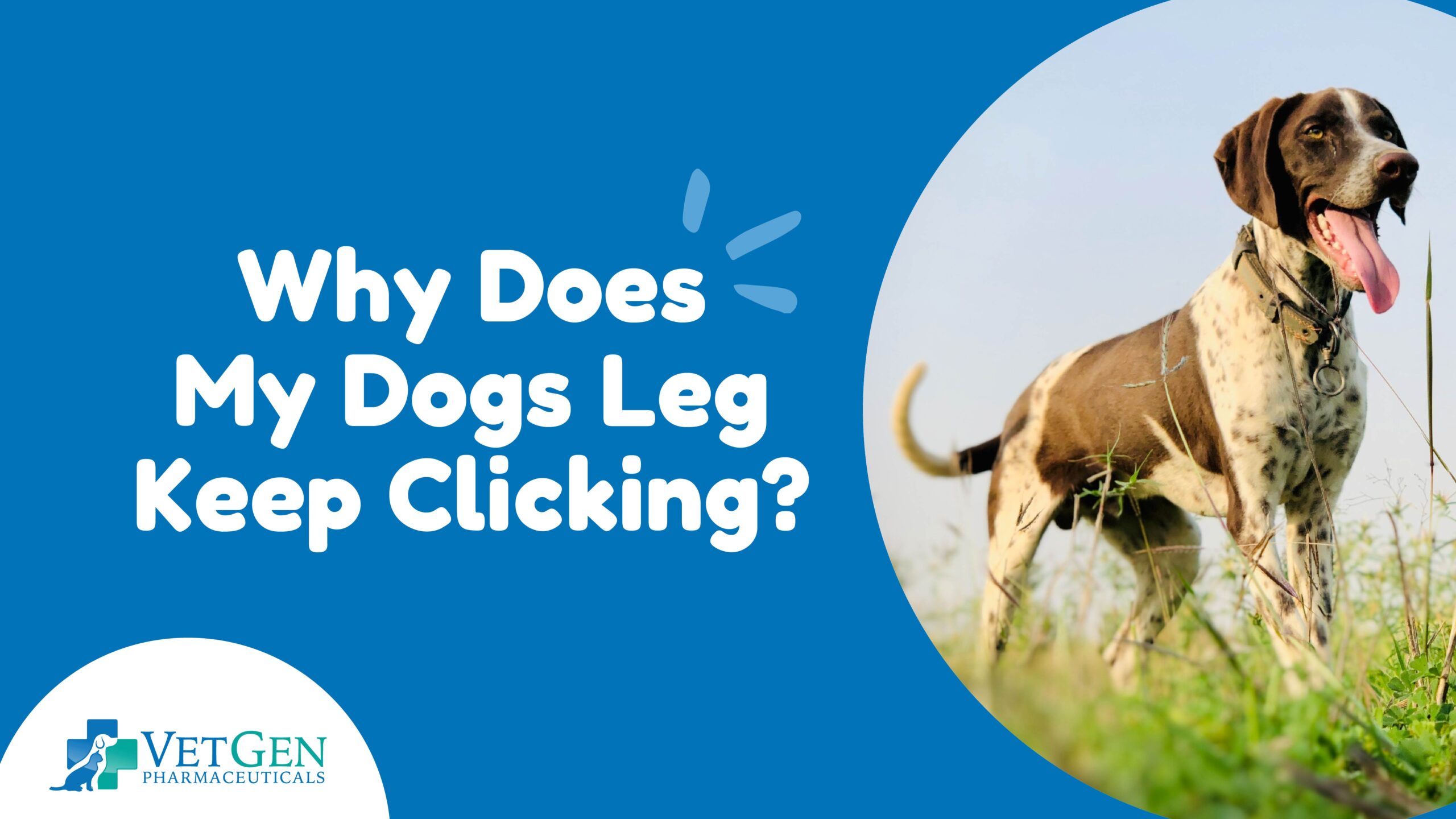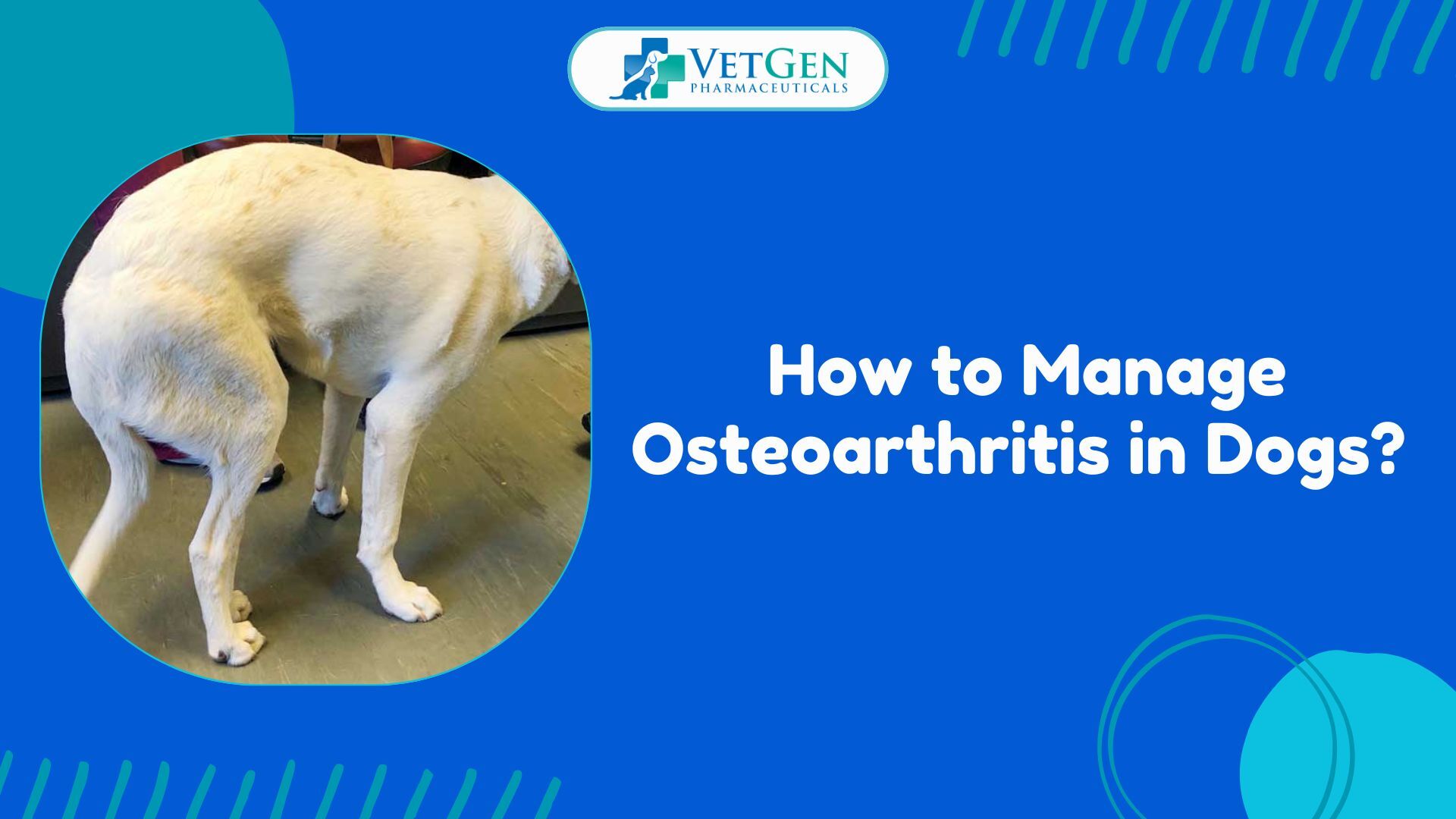You may have witnessed your dog’s leg clicking when moving or stretching and felt alarmed. Have you wondered why this happens? Dogs joints might click for a variety of reasons. Typically, it could be due to an abnormal friction or movement in the joint region. This is because of patellar luxation or hip dysplasia. In the former case, the kneecap generally shifts out of its usual position, while in the latter case, it is due to hip joint malformation.
Here, we shall know about the main causes, diagnosis, options of treatment, and prevention steps for maintaining the general well-being and joint health of your dog—
Causes of Dog’s Clicking Sounds
The clicking sound of the dog might indicate a couple of issues that could be afflicting its ligaments or joints. The sound can be heard when the dog makes movements like running or walking and it is often because of abnormal working between the joint spaces.
Patellar Luxation
It happens when the kneecap or the patella slips out of its normal place in the thigh bone’s groove. It is seen more commonly in dogs of smaller breeds like Pomeranians, Yorkshire Terriers, and Boston Terriers. Meanwhile, it may happen in any dog breed.
The patella’s displacement may be intermittent forcing the kneecap to move out and slip back into its place, thereby making a clicking sound. This results in inflammation, pain, and resultantly, degenerative joint disease if not treated in time.
Options of treatment can vary from physical therapy and management of weight to even surgical correction in extreme cases depending on the condition’s severity.
Hip Dysplasia
Hip dysplasia happens to be a genetic issue in which the hip joint of the dog does not develop properly causing unstable and loose joints. It is generally found in large dog breeds like Golden Retrievers, German Shepherds, and Labrador Retrievers. Abnormal grinding and rubbing of the joint can be due to bad fit between femoral head, i.e. top of the thigh bone, and hip socket(acetabulum). This can cause clicking noise.
This may result in painful arthritis over a period of time. A couple lifestyle changes, medicines for controlling inflammation and pain, and surgery can help in managing the joint alignment.
Cruciate Ligament Tear
Cruciate ligaments are very important for the stability of a dog’s knee joint. A tear in the ligaments(anterior cruciate ligament or ACL) may result in severe instability resulting in clicking sound while moving. It is quite common in dogs who are active and may be caused by chronic stress or sudden movements on the ligament.
Common signs are ligament tears, knee swelling, lameness, and clear clicking during the walking of the dog. It can be treated with rest and a few anti-inflammatory medicine and even surgical intervention.
Joint Degeneration or Arthritis
Osteoarthritis, or arthritis, happens to be a progressive degenerative disease affecting the joints resulting in cartilage breakdown. When there is a wear and tear of protective cartilage, it causes the bones to rub against one another, thereby creating some sort of friction and a clicking sound. Any joint can get affected but arthritis is generally seen in hips, elbows, and knees of older dogs.
Common symptoms are pain, decreased activity, stiffness, and clicking sound from the joints affected by the disease. Its treatment is meant to relieve symptoms and slow the disease’s progress through weight control, pain management steps, simple exercise, and medicines like joint supplements for improving functioning of the joint.
Methods of Diagnosis
The first and foremost step in diagnosing the reason behind the clicking sounds is the veterinary exam. The veterinarian shall preview the medical history including changes in activity levels, start of symptoms, or any injuries in the past. The detailed assessment of the structure of the leg is done under the physical exam to see the swelling, pain response, clicking sound, and the leg’s mechanics for highlighting the underlying issue.
Imaging Techniques
These have an important role in proper diagnosis of joint and ligament problems in dogs.
X-rays: The first imaging technique for viewing the bones and joints of the leg is X-ray. It reveals any change in positioning of the bone, arthritis signs, or any proof of chronic joint problems.
MRI:Magnetic Resonance Imaging(MRI) is helpful to see soft tissues like tendons, ligaments, and cartilage within the joint. Any tear in the ligament like soft tissue inflammation or a cruciate ligament rupture can be identified.
Ultrasound:It is meant for seeing the soft tissue structures surrounding the joints and for detection of abnormalities in the tendons and ligaments not seen in an X-ray.
Physical Tests
Veterinarians generally conduct physical tests apart from manual and visual examination to know details about the integrity and health of ligaments and joints:
Drawer Test: It is done for diagnosis of crucial ligament rupture in the knee. This is done by moving the tibia forward while keeping the femur steady. A torn ligament can be witnessed on excessive movement.
Tibial Compression test: Yet another test to know about the integrity of cruciate ligament is Tibial compression test. The veterinarian flexes the knee of the dog while applying pressure on the tibia to know whether the tibia moves forward.
Patellar luxation evaluation: This is done to know the kneecap’s stability when it is moved from side to side to know whether it dislocates or not.
Diet and Nutrition
For maintenance of good joint health, a balanced diet is of utmost importance. Let us see nutrients that aid joint health:
Chondroitin and Glucosamine: These are given in dog food for good maintenance of joint health including cartilage structure and prevention of its breakdown.
Omega-3 Fatty Acids: This is found in fish oils and helps to reduce inflammation in the body, especially joints.
Adequate Protein: Good-quality proteins are vital for maintenance of muscles and stability of joints.
Nutrient-rich and balanced diet in accordance with their size, health status, and life stage is critical for prevention of joint problems.
Exercise and Weight Management
Exercise is very integral for the health of your dog. However, it has to be balanced with their joint health and physical capabilities.
Regular and moderate exercise like gentle walking can play a great role in maintaining muscle mass and keeping the joints flexible without putting overburdening the joints.
Jumping or other high-impact activities must be restricted to minimum for dogs having joint problems or at high risk of such problems.
Keeping a good body weight also cuts down stress on joints, thereby reducing the risk of joint injuries and problems like arthritis. Obese or overweight dogs are at great risk of having joint problems. Veterinarians can undertake physical examination and prescribe X-rays or other techniques for seeing the dogs’ joints health over a period of time.
Veterinarians may recommend changes in exercise, diet, or medical interventions for addressing joint health problems.
Conclusion
To conclude, we can say that the sound of clicking from the dog’s leg might spell underlying issues, especially regarding ligament or joint problems. So, regular veterinary check-ups are very important for knowing the condition and using the treatment options as needed. This is for ensuring the ideal joint health for your dog and improvising their overall quality of life.






